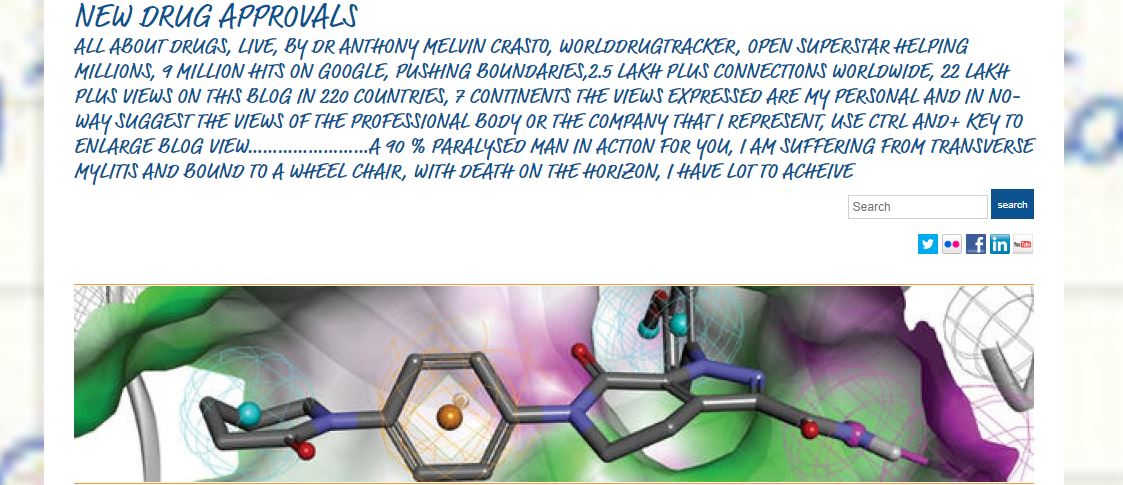Abbreviated New Drug Application (ANDA)
An Abbreviated New Drug Application (ANDA) contains data which when submitted to FDA’s Center for Drug Evaluation and Research, Office of Generic Drugs, provides for the review and ultimate approval of a generic drug product. Once approved, an applicant may manufacture and market the generic drug product to provide a safe, effective, low cost alternative to the American public.
A generic drug product is one that is comparable to an innovator drug product in dosage form, strength, route of administration, quality, performance characteristics and intended use. All approved products, both innovator and generic, are listed in FDA’s Approved Drug Products with Therapeutic Equivalence Evaluations (Orange Book).
Generic drug applications are termed “abbreviated” because they are generally not required to include preclinical (animal) and clinical (human) data to establish safety and effectiveness. Instead, generic applicants must scientifically demonstrate that their product is bioequivalent (i.e., performs in the same manner as the innovator drug). One way scientists demonstrate bioequivalence is to measure the time it takes the generic drug to reach the bloodstream in 24 to 36 healthy, volunteers. This gives them the rate of absorption, or bioavailability, of the generic drug, which they can then compare to that of the innovator drug. The generic version must deliver the same amount of active ingredients into a patient’s bloodstream in the same amount of time as the innovator drug.
Using bioequivalence as the basis for approving generic copies of drug products was established by the “Drug Price Competition and Patent Term Restoration Act of 1984,” also known as the Waxman-Hatch Act. This Act expedites the availability of less costly generic drugs by permitting FDA to approve applications to market generic versions of brand-name drugs without conducting costly and duplicative clinical trials. At the same time, the brand-name companies can apply for up to five additional years longer patent protection for the new medicines they developed to make up for time lost while their products were going through FDA’s approval process. Brand-name drugs are subject to the same bioequivalence tests as generics upon reformulation. For more information on generic drug bioequivalency requirements, please see the chapter entitled “FDA Ensures Equivalence of Generic Drugs” in “From Test Tube to Patient: Improving Health Through Human Drugs.”
The Office of Generic Drugs home page provides additional information to generic drug developers, focusing on how CDER determines the safety and bioequivalence of generic drug products prior to approval for marketing. Generic drug application reviewers focus on bioequivalence data, chemistry and microbiology data, requests for plant inspection, and drug labeling information.
more info
An Abbreviated New Drug Application (ANDA) is an application for a U.S. generic drugapproval for an existing licensed medication or approved drug.
The ANDA is submitted to FDA‘s Center for Drug Evaluation and Research, Office of Generic Drugs, which provides for the review and ultimate approval of a generic drug product. Once approved, an applicant may manufacture and market the generic drug product to provide a safe, effective, low cost alternative to the American public. Electronic submissions of ANDAs have grown by 70% since November 2008.[1] The Section IV challenge has been credited with suppressing new drug innovation.[2]
A generic drug product is one that is comparable to an innovator drug product in dosage form, strength, route of administration, quality, performance characteristics and intended use. All approved products, both innovator and generic, are listed in FDA’s Approved Drug Products with Therapeutic Equivalence Evaluations (Orange Book).
Generic drug applications are termed “abbreviated” because they are generally not required to include preclinical (animal and in vitro) and clinical (human) trial data to establish safety and effectiveness. Instead, generic applicants must scientifically demonstrate that their product is bioequivalent (i.e., performs in the same manner as the innovator drug). One way scientists demonstrate bioequivalence is to measure the time it takes the generic drug to reach the bloodstream in 24 to 36 healthy volunteers. This gives them the rate of absorption, or bioavailability, of the generic drug, which they can then compare to that of the innovator drug. The generic version must deliver the same amount of active ingredients into a patient’s bloodstream in the same amount of time as the innovator drug. The bioequivalence of a drug can be demonstrated by comparing drugs dissolution or transdermal drug absorption in case of topically active drug, in case of systemically active drug blood concentration of that drugs is compared with innovator drugs
Using bioequivalence as the basis for approving generic copies of drug products was established by the Drug Price Competition and Patent Term Restoration Act of 1984, also known as the Hatch-Waxman Act. This Act expedites the availability of less costly generic drugs by permitting FDA to approve applications to market generic versions of brand-name drugs without conducting costly and duplicative clinical trials. At the same time, the brand-name companies can apply for up to five additional years longer patent protection for the new medicines they developed to make up for time lost while their products were going through FDA’s approval process. Brand-name drugs are subject to the same bioequivalence tests as generics upon reformulation.
- Kathie Clark (June 30, 2009). “DIA Update: News from the FDA”. The eCTD summit.
- http://www.sciencemag.org/cgi/content/full/326/5951/370
- Generic drug applications are termed “abbreviated” because they are generally not required to include preclinical (animal) and clinical (human) data to establish safety and effectiveness.
- Generic applicants must scientifically demonstrate that their product is bioequivalent (i.e., performs in the same manner as the innovator drug).
- Bioequivalence is generally determined by measuring the time taken for generic drug to reach the bloodstream in 24 to 36 healthy, volunteers. This gives the rate of absorption, or bioavailability, of the generic drug, which can be compared to that of the innovator drug.
- The generic version must deliver the same amount of active ingredients into a patient’s bloodstream in the same amount of time as the innovator drug.
- The basis for approving generic copies of drug products was established by the “Drug Price Competition and Patent Term Restoration Act of 1984,” also known as the “Hatch -Waxman Act”.
- The facility should be registered with FDA using form FDA 2656(Registration of Drug Establishment/Labeler Code Assignment form).
- The product(s)/Drugs to be listed with FDA using form FDA 2657 (Drug listing form) .
|
Module
|
Information
|
|
1
|
Administrative and prescribing information (region specific)
|
|
2
|
Summaries and overview
|
|
3
|
Information on product quality
|
|
4
|
Nonclinical study reports
|
|
5
|
Clinical study reports
|
- Cover letter
- Appropriate administrative documents should be provided with the submission. Examples of administrative documents are listed below. 21 CFR 314.94 consists of details on the administrative documents needed for ANDA.
- Field copy certification
- Debarment certification
- Financial Certification
- Patent information on any patent that claims the drug, if applicable
- Patent certifications
- Letters of authorization for reference to other applications or drug master files (if applicable)
- US Agent Letter of Authorization
- Proprietary name request (if applicable )
- Basis of ANDA submission
- Comparison between Generic Drug and RLD-505(j)(2)(A)
- Request for waiver
- Draft labeling
- Listed drug labeling
- Labeling requirements
- Financial disclosure information
- Waiver requests
- Environmental assessment or request for categorical exclusion
- Statements of claimed exclusivity and associated certifications
- Container and package labels
- Package inserts
- Draft labeling
- Patient leaflets
- Information sheets
- Medication Guides
- Quality overall summary (2.3, Module 2, section 3)
- Non clinical overview (2.4)
- Clinical overview (2.5)
- Nonclinical summary (2.6)
- Clinical summary (2.7)
For information in module 5 specific to an ANDA, refer –ANDA filing checklist.
|
copy
|
Binder color
|
|
Archival Copy
|
Blue
|
|
Review Copy
|
Red
|
|
Field Copy
|
Green
|

“ALL FOR DRUGS” CATERS TO EDUCATION GLOBALLY, No commercial exploits are done or advertisements added by me. This is a compilation for educational purposes only. P.S. : The views expressed are my personal and in no-way suggest the views of the professional body or the company that I represent
READ
ANTHONY MELVIN CRASTO
 DRUG APPROVALS BY DR ANTHONY MELVIN CRASTO …..FOR BLOG HOME CLICK HERE
DRUG APPROVALS BY DR ANTHONY MELVIN CRASTO …..FOR BLOG HOME CLICK HERE
 amcrasto@gmail.com
amcrasto@gmail.com
CALL +919323115463 INDIA
//////////////
45,298 total views, 1 views today

















